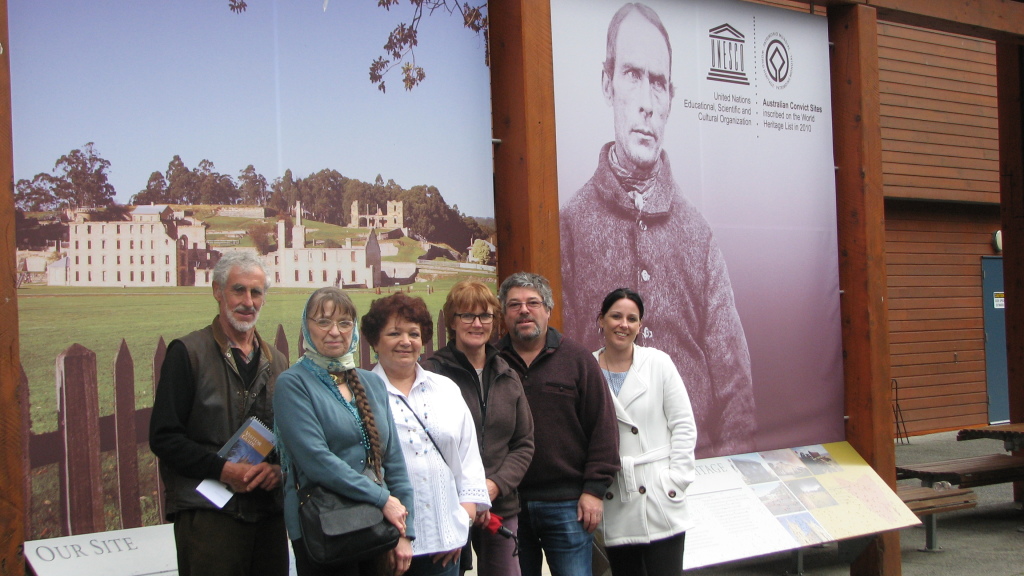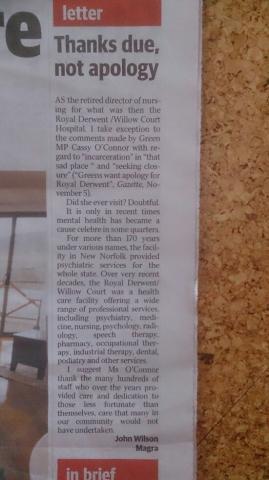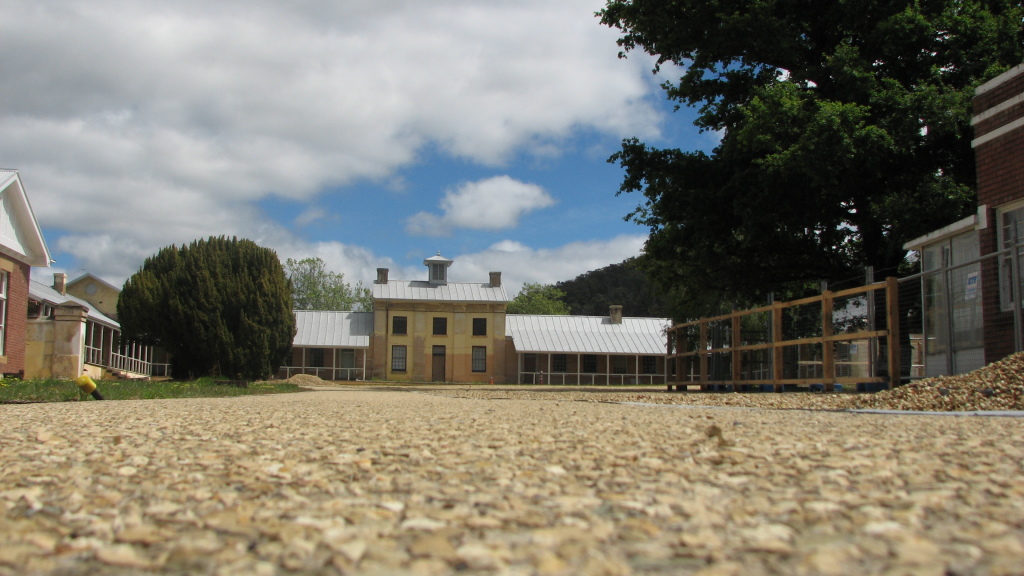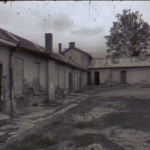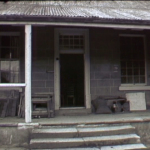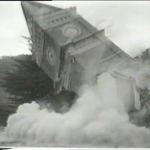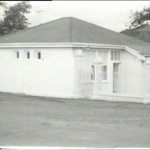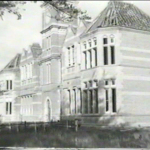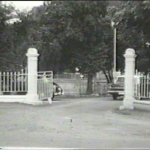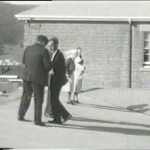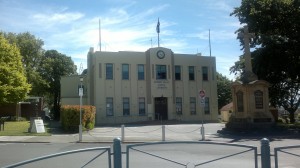History of Disability Services in Tasmania
History
Society’s changing attitudes to disability
Abandonment
The abandonment model of response to people with disabilities is basically a model where, if family, friends or someone is unwilling or unable to support a person requiring support in order to continue to live, that person is abandoned. Along with abandonment there were historically, and of course sometimes still are today, more direct means such as infanticide, euthanasia or direct murder employed against people with disabilities.
Infanticide, the deliberate killing of small children was not a statutory crime until the 1920s in England or Australia. Infanticide is a special kind of murder bound up with our notion of motherhood: a father cannot be accused of infanticide. There is an issue here about children in general, especially very small children, who were historically not considered ‘people’ in the real sense. Infanticide is somehow less of a crime than killing a full person, and children with disabilities are of course more likely to be the victims of infanticide. Both in the past and now, intellectual disability, blindness, paralysis or missing limbs would all have been compounding justification for infanticide.
The actual ways that children, including children with disabilities, have been disposed of, are many and varied, depending on the culture and technology of the times. The easiest option has often been to abandon children: in ancient Greece children were left to the mercy of the elements and creatures of the wild. Some people recommended more direct means:
‘Idiots are men in whom devils have established themselves, and all the physicians who heal these infirmities as though they proceeded from natural causes are ignorant blockheads, who know nothing about the power of the demon. …. I myself saw a child of this kind which had no human parents, but had proceeded from the devil…. if anyone touched him, he yelled out like a mad creature, and with a peculiar sort of scream. I said to the prince of Saxony, with whom I was at the time ‘If I had the ordering of things here, I would have that child thrown into the Moldou [a river]. But the prince of Saxony was not of my opinion in the matter’.
Martin Luther
‘Killing a defective infant is not morally equivalent to killing a person. Very often it is not wrong at all’.
Prof. Peter Singer, author of Practical Ethics & Animal Liberation
It is probably sufficient for our purposes to note that the debate about the right to life is still a current one and one where there is no universal agreement. Today we are still faced with decisions about abortion, when to cease life support, about euthanasia and the quality of life, about the cost to society and the wishes and capacity of direct carers, especially parents, to provide support. Decisions in the past as to whether or not to allow people with disabilities to live have usually been made when they are new-born infants, but this has not always been so. In medieval Europe people with intellectual disabilities were dispatched along waterways in so-called ‘ships of fools’, in the hope that all passengers would drown. It was not direct murder, but a form of abandonment. This response was justified on moral, religious, and philosophical grounds, such as:
we are not dealing with people at all;
they are better off dead;
practical reasons: no-one will take responsibility; and
economic reasons: no-one has the capacity to look after these people.
Institutional response
Something quite profound occurred around 700-800 AD. One of the first homes for abandoned children was established in Milan, Italy in AD 787 by the Archbishop Datheus. The most famous early example of a large institutional complex offering services to the old, people with epilepsy, people with intellectual disabilities and the mentally ill was the Hospice of the Sal Petriere in Paris. Founded in the seventeenth century by Louis 14th it was one of the first institutions to have separate areas for those with intellectual disabilities, and the work of French reformers such as Pinel, Itard, Morel, Bourneville and Segan drew attention to the special needs of people with intellectual disabilities.
This response reflects the following changes in attitude:
That people and especially children, including those with disabilities, had a right to live -abandonment or killing of these sections of society that were not able to provide or look after themselves was not justifiable.
If parents or family were not willing or able to provide this care, someone else should.
The responsibility for care was still not perceived to be society’s as such; it was that of religious or charitable institutions or governments.
The charity model was the prevailing one, the exception being in France in the 1700s where the government (or more accurately the monarch) took an active responsibility at this time.
The main features of institutions, some of which still exist include:
the need for physical care -the right to life, shelter and nourishment;
the need to isolate, seclude and restrain people to prevent harm to themselves or others;
beginnings of separating different groups of people
people with intellectual disabilities
people who had mental illness
young, old, sick;
the search for cures, the idea that both mental illness and intellectual disability could be cured by certain treatments or environments, often based on fairly crude scientific notions. The aim was to restore people and make them normal again;
overcrowding -conditions were always basic and harsh.
Educational response
Up to the seventeenth century access to education had been for the privileged or wealthy. Schools were mainly run by established churches.
The philosopher John Locke (1632-1704) and later in the 1700s the Frenchman Rousseau were the leaders of educational reforms which were to have profound and universal effects. Locke’s educational ideas have had far reaching effects on our attitudes to people with intellectual disabilities. The main effect of these ideas and reforms has been to alter educational theory and practice. It has also made education available to many more people.
Locke stressed the fact that people could learn to think: he asserted that our minds at birth are like blank slates and this implied that high intelligence was not the prerogative of the wealthy or the well-bred. If the mind was a blank slate then one person’s blank slate at birth was as good as another’s. Everybody could be educated or trained to some extent, including people with disabilities and the challenge was how best to educate each specific group.
Johann Pestalozzi (1770s) a German-Swiss was one of the first disciples of this new educational theory. He began a farm in 1774 for fifty beggar children, saying that he was trying to psychologise human education. At the core of his ideas was the conviction that sense impressions are the foundation of education. He replaced old ideas with new ones about natural growth, instinct, and natural ability and it is from these ideas that the current so-called developmental model for people with disabilities has been derived.
These ideas took time to flow through to groups of people with physical disabilities let alone to people with intellectual disabilities.
First school for deaf people was opened in Paris in 1760.
The first school for blind people opened, also in France, in 1784.
The first school for crippled children opened in Munich in 1832.
In the nineteenth century the first schools specifically for children with intellectual disabilities began to operate.
At this time we also see the refinement of assessment, for example, who is trainable and who is educable. Primarily this took the form of measuring intelligence (psychometrics), with the IQ test probably being the best known. There was also the beginning of study into the relationship between intelligence and genetic makeup. The use of psychology tests for the assessment of IQ is now less common. Service providers and educators now concentrate on the provision of services so that it should no longer be necessary to label people as having a severe or mild disability (based on intellect or physical functioning) but to assess according to actual supports or services needed.
It has also begun to be realised that services need to be flexible so as to allow people to slip easily either into or out of non-disability-specific services. This notion was pioneered in the USA where the movement of mainstreaming, that is insisting on the right to ordinary or generic services for people with disabilities, is supported in law, as it now is in Australia.
Social response
Normalisation as a concept or an ideology has received enormous world wide acceptance but its chief advocate Wolf Wolfensberger is one who has lingering doubts about it. He says that he has never been satisfied with the principles of normalisation and now prefers the concept of social role valorisation which accentuates the value which society puts upon roles irrespective of any real value of that role.
Social roles may be whatever a society at a time considers to be important.
What is important is social acceptance, and social acceptance depends upon the values of a given society. Both normalisation and social role valorisation are limited in that they seek acceptance in a social context. Normalisation is analogous to the theory of assimilation in regard to migrants: acceptance depending upon their assimilation to the Australian way of life by taking on the characteristics of an Australian whatever that may be.
Social role valorisation is more like multiculturalism. It is a matter of valuing different roles, so people can be different but still be accepted. However, acceptance is argued for purely within the framework of social tolerance, social harmony, social diversity and ultimately social cohesiveness. Multiculturalism like social role valorisation is a good thing because it is ultimately beneficial to society.
Although it is extremely difficult for people with intellectual disabilities to take on valued social roles, that is what we are aiming for at the moment. While problematic social responses may be familiar, increasingly ethical responses are evident.
Ethical response
Richard Wollheim, in an article entitled ‘On Persons and their Lives’ (1980) considers the question of what it is about human beings and their lives that is valuable or ought to be valued. Interestingly, for him, it is not the external life that is of real value (i.e. the ability to perform tasks, formulate ideas or become socially acceptable) but rather it is the internal life which is of value precisely because each one is unique. In a literal and physiological sense your point of view is yours, just as your eyes are yours and mine are mine. Wollheim puts it like this: ‘being myself and not you or any other person, I lead my own life, and I may think of the life I have led as a story with a plot, albeit not yet complete. I may say to myself I have done all these things, and experienced all this, and come out here’.
No account of a person could be complete unless it paid attention to how that person has developed through time. Therefore memories are essential to my account of myself, incorporated in the story of my life. The value of a person under this ethical model lies not in the fact that each person has a unique story (a unique history) and is able to relate it, but rather that each person is a unique story, a series of perceptions held together and remembered. The assumption here is that the internal process remains intact even when the external process is damaged. This is why Henri Bergson for instance, claims that brain damage never results in a loss of memory (because memories are mentally constructed images) but only in a loss of the ability to externalise memories (articulate or act in accordance with those memories). In a sense, the ethical model is an attempt to separate the mental and physical parts of people in a non-religious context, and to say what is valuable about people is the process of becoming, the process is common to all but the content is always unique.
The implications for this response are:
less focus on objective outcomes -more importance placed on everyday interactions;
more individualised services;
greater emphasis on acceptance, increased control by individuals;
a redefinition of outcomes -more emphasis on ‘subjective’ outcomes -happiness, satisfaction;
aim of supports being to develop a happy life rather than a ‘useful’ (in the utilitarian sense) life, because life itself is of value.
From History of Service Models, ASSID Conference (January 1996) John Nehrmann
Tasmanian context
The above examination of the history of service provision to people with disabilities is important in understanding why despite current legislation and policy, discrimination towards this group continues to occur.
It was as recently as 1985 that the Tasmanian Education Act was amended to allow children and young people with severe disabilities an entitlement to education.
Prior to this these children either stayed at home, were placed in institutions or attended day training centres if these were available. Since 1986 educational provision has developed to a stage where access to local regular schools is available to students with severe disabilities.
The Department of Education Inclusion of Students with Disabilities in Regular Schools Policy describes the responsibilities of schools in ensuring access and support to students with disabilities. In terms of social change schools play a critical role, and school communities which welcome and value diversity and tolerance by actively implementing supportive school policies and programs will be effective in bringing about further changes in attitudes to disability, and a consequent improvement in opportunities for people with disabilities to belong to and participate in their local communities
http://www.education.tas.gov.au/school/health/inclusive/antidiscrimination/disabilitydiscrimination/history
 At an afternoon tea, hosted by Cr. Julie Triffitt and Mayor Martyn Evans the representatives of the Friends of Willow Court were able to discuss the Willow Court tunnel drain with Assoc Prof Heather Burke from the Flinders University (Dept Archaeology). She was invited to New Norfolk by Eric Hutchinson and networked up with the Derwent Valley Council. Since then there has been an arrangement that students from Flinders Uni will be studying the tunnel from Willow Court to the Derwent River, but today it was announced that there is at least ten years of archaeological work within Willow Court site and beyond.
At an afternoon tea, hosted by Cr. Julie Triffitt and Mayor Martyn Evans the representatives of the Friends of Willow Court were able to discuss the Willow Court tunnel drain with Assoc Prof Heather Burke from the Flinders University (Dept Archaeology). She was invited to New Norfolk by Eric Hutchinson and networked up with the Derwent Valley Council. Since then there has been an arrangement that students from Flinders Uni will be studying the tunnel from Willow Court to the Derwent River, but today it was announced that there is at least ten years of archaeological work within Willow Court site and beyond.